4 steps to integrate Google Analytics data with Zuora
Easily integrate Google Analytics data, such as channel and landing page information, into Zuora so you can run reports that show you where your signups, customers and revenue are coming from.
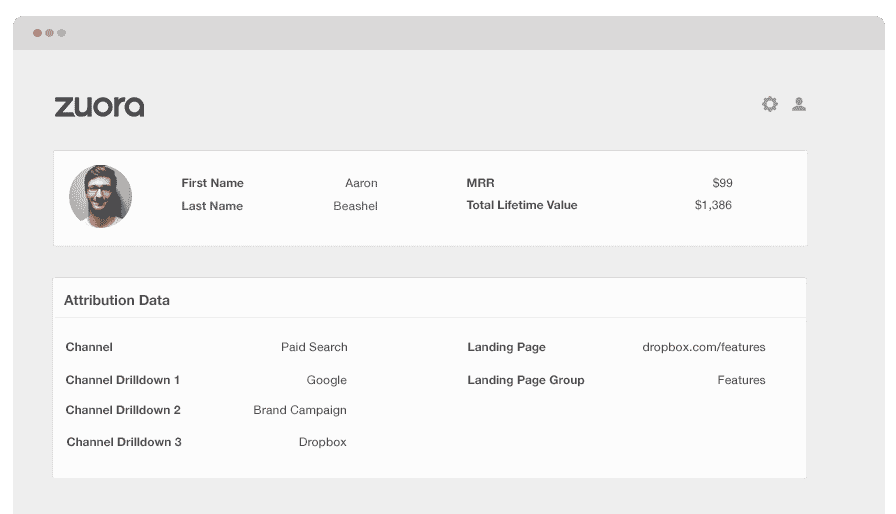
Do you understand which marketing channels and campaigns are bringing in the majority of your customers, signups, and revenue?
One of the excellent tools that can provide you with this information is Google Analytics. However, it can’t tell you which of your visitors have been converted into customers, how much they pay you, their lifetime value, how frequently they churn, etc.
To obtain this kind of information, you have to send the Google Analytics data to your billing platform so you can organise your revenue reports according to channel and campaign.
Read on to learn more about how you can use Attributer to send Google Analytics data into Zuora.
What is Attributer?
Attributer is basically a piece of code you place on your website. It determines where your visitors have come from through the technical data it receives. It then groups each visit according to a series of channels such as paid social, paid search, organic search, etc. From here, it stores this categorised information in a cookie in the visitor’s browser.
Every time a visitor signs up for your product, Attributer passes the channel information to Zuora together with the lead’s details.
With this data inside Zuora, you can reach answers to questions like:
- How many customers have I generated from my Google ads?
- What’s the average MRR of customers from my LinkedIn ads vs. customers from my Facebook ads?
- What’s the churn rate of customers from organic Google searches?
4 steps to help you integrate Google Analytics data and Zuora
Using Attributer to connect Google Analytics data with Zuora is easy. Here's how to do it in 4 easy steps:
1. Simply add hidden fields to your forms
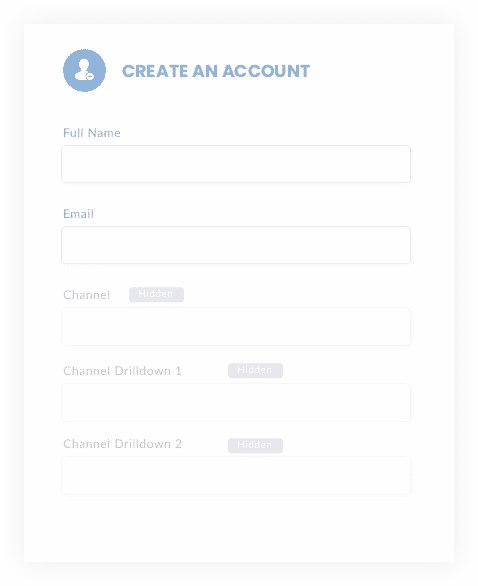
The first thing to do is add multiple hidden fields to your sign-up forms. These hidden fields include:
- Channel
- Channel Drilldown 1
- Channel Drildown 2
- Channel Drilldown 3
- Landing Page
- Landing Page Group
Alternatively, you can write a simple piece of javascript to pull the data from the cookie and send it through to Zuora when a user completes a signup form. This is handy if you have Google or Facebook signup options where a user can create an account without actually completing a form. For more information on this, check out this help article.
2. Fill hidden fields automatically with Google Analytics data
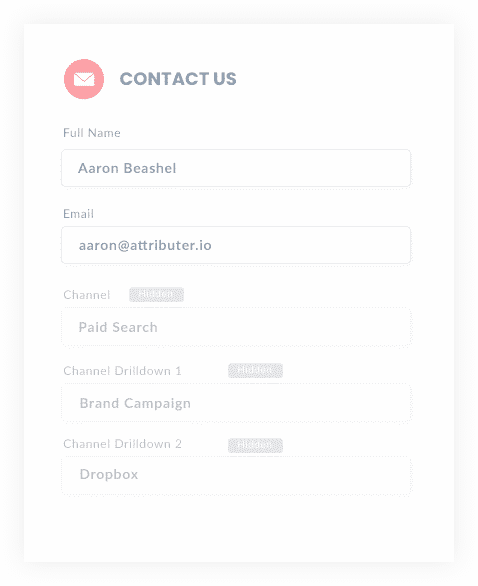
Attributer monitors where your visitors come from and once they complete a form on your website, it populates the hidden fields with Google Analytics data.
As an example, if I was a marketer at Adobe and a visitor came to my website from a brand campaign in paid search, it would populate the hidden fields as follows (depending on the UTM parameters I used behind my ads):
- Channel = Paid search
- Channel Drilldown 1 = Google
- Channel Drildown 2 = Brand campaign
- Channel Drilldown 3 = Adobe
On top of the information on channel, it would also capture the visitor's first landing page (i.e. Adobe.com/blog/best-crm-software) and the first landing page group (i.e. /blog)
3. Google Analytics data appears in Zuora
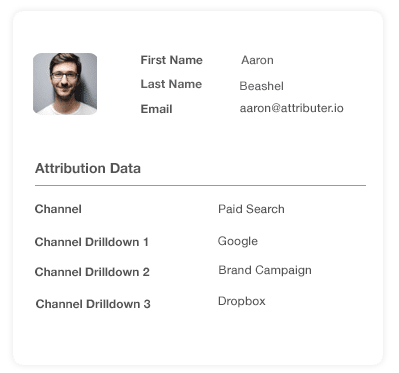
Every time a visitor submits a form on your site, the Google Analytics data and the lead’s details stored in the cookie are passed to Zuora.
4. Run reports to understand which channels are driving leads, customers and revenue
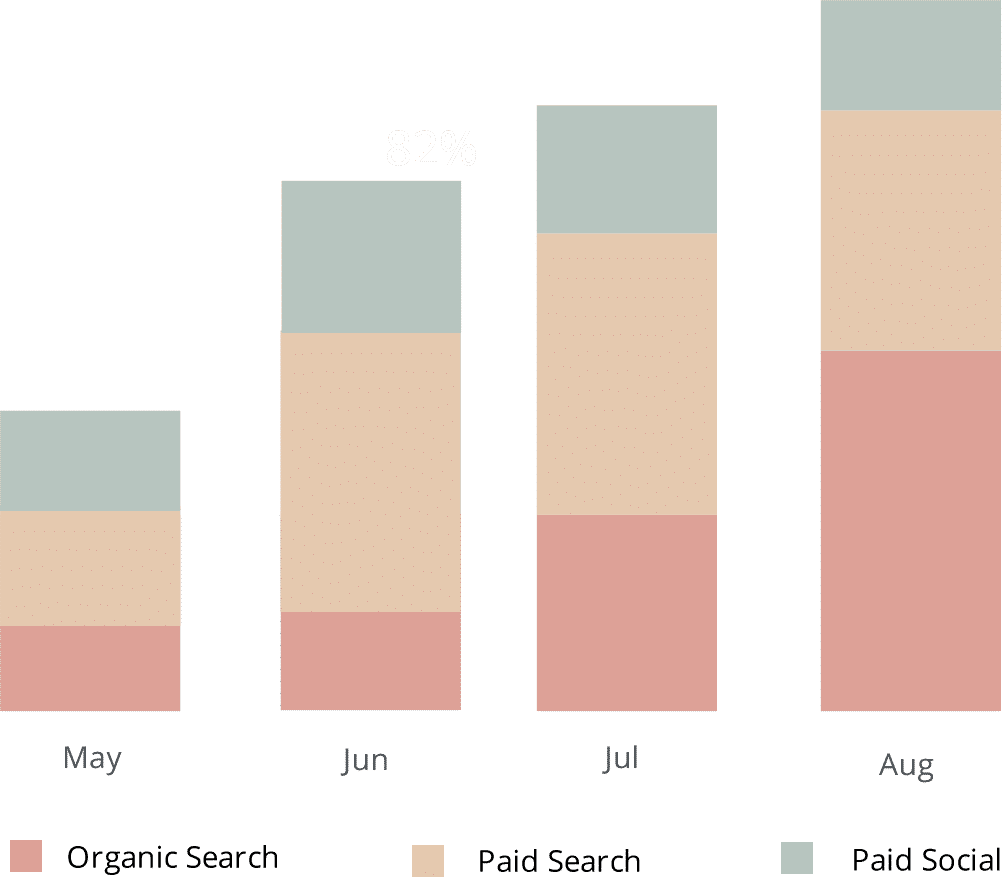
As soon as the Google Analytics data is in Zuora, you can create reports that provide insights into your many subscription metrics, which can be broken down by the marketing channel and/or campaign your customers came through.
These include:
- New trials added each month by channel or campaign
- Trial to customer conversion rate by channel or campaign
- New customers added each month by channel or campaign
- New MRR added each month by channel or campaign
- New ARR added each month by channel or campaign
- ARPU by channel or campaign
- Lifetime value by channel or campaign
- Customer churn rate by channel or campaign
- MRR churn rate by channel or campaign
What data gets passed into Zuora?
Based on our experience, we here at Attributer have come to believe that there are two vital factors to attribution:
- Channel - How did a visitor arrive on your site? Usually one of organic search, paid search, paid social, referral, etc.
- Landing Page - What content did the visitor find appealing? It could be your features pages, blog, ebooks, etc.
Inspired by aiding you in answering these questions, we have built Attributer so you can be armed with all the information you may need.
1. Marketing channel data
Attributer automatically gathers the information on the channels where your leads come from (i.e., paid social, paid search, organic search) as well as additional details on each channel (i.e., For paid search, it also captures the campaign, ad group, keyword, etc.)
2. Landing page data
Other data that Attributer instinctively captures includes the first page the lead sees on your site. An example of this is dropbox.com/blog/best-file-storage-tools. Furthermore, the page’s category (i.e., blog) is automatically captured.
This data is beneficial for seeing all of your related content as a whole. For example, you will be able to see the number of leads your entire blog has generated. In addition, you will also be able to zoom in on each blog post’s lead and customer generation data.
What you can do with all this data?
When the Google Analytics data reaches Zuora, it can be used in several different ways, such as:
1. Report on channels
Having the Google Analytics data in Zuora, you can create reports that provide insights to questions like:
- How many signups did you get from your Google ads?
- What's the signup-to-customer conversion rate of leads from Google ads?
- How many customers have been generated by your Google ads?
- How much MRR or ARR has been generated by your Google ads?
- What's the lifetime value of customers from your Google ads, and how does that compare to other channels?
- What's the overall ROI of your Google ads (spend/revenue generated)?
You can build reports in Zuora's native reporting tools or send the data to any analytics and business intelligence tools that integrate with Zuora to create more advanced reports there.
2. Report on content
Considering that Attributer also captures the landing page data and its group, you can create reports that provide you with the information on your site content’s performance too.
For instance, you can run reports that provide answers to questions like:
- How many signups did I get from my blog?
- Which blog posts have delivered the most signups?
- Which blog posts are converting people into customers?
- What is the ROI of my blogging efforts?
You will also be able to find out how certain sections on your site perform in customer conversion. So, for instance, you will be able to see that while your blog section might be attracting a lot of visitors and signups, only a few of them are actually turning into customers. With this knowledge, you can either continue your blog efforts or allocate your time and resource elsewhere.
Wrap up
Attributer is an excellent tool that can aid you in getting Google Analytics data in Zuora.
It's simple to install, and once it's working will allow you to run detailed reports and dashboards right inside Zuora. These reports and dashboards can provide details on the performance of content, advertising campaigns, SEO efforts, and more.
What's more is, it's free to try! So start your 14-day free trial today and find out if it's for you.
Get Started For Free
Start your 14-day free trial of Attributer today!

About the Author
Aaron Beashel is the founder of Attributer and has over 15 years of experience in marketing & analytics. He is a recognized expert in the subject and has written articles for leading websites such as Hubspot, Zapier, Search Engine Journal, Buffer, Unbounce & more. Learn more about Aaron here.
